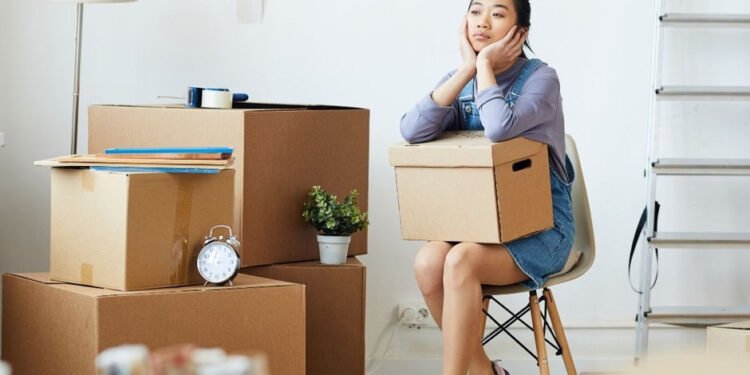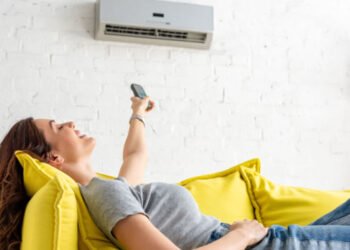One of the key steps to a successful local move is decluttering. Decluttering before a move not only helps you start fresh in your new space but also makes the moving process smoother and more efficient. In this blog post, we will guide you through the importance of decluttering before a local move and provide you with practical tips on how to sort, dispose of, and organize your belongings effectively. By following these steps, you can streamline your moving process and ensure a clutter-free start in your new home.
Understanding the Importance of Decluttering Before a Move
Moving to a new home presents an excellent opportunity to assess your belongings and declutter. While it may seem like an additional task on top of the already daunting moving process, decluttering is a crucial step that offers numerous benefits. Here’s why it’s important to declutter before a local move:
1. Streamline Your Moving Process
Decluttering allows you to reduce the number of items you need to pack and transport to your new home. By eliminating unnecessary belongings, you can streamline your moving process and make it more efficient. This means less time spent packing and unpacking, as well as lower transportation costs.
Eric, the owner at Fort Mill Friendly Movers (fortmillmoving.com) says that, “We complete several jobs every week and we always find that the easiest moves happen when customers have scaled down their belongings beforehand.”
2. Create Space in Your New Home
Moving into a new home is an opportunity for a fresh start. Decluttering before you move allows you to create more space in your new home. You’ll have a chance to evaluate the layout and size of your new space and decide which items are essential and which ones you can live without. This way, you can ensure that your new home feels spacious, organized, and clutter-free from the start. Piece of Cake Moving + Storage can help you streamline the process and make your move hassle-free.
3. Reduce Stress and Overwhelm
4. Save Time and Money
Decluttering before a move can save you both time and money. As you sort through your belongings, you’ll have the opportunity to sell or donate items you no longer need or use. This can help you generate some extra cash and reduce the number of items you need to pack and move. Additionally, by downsizing your belongings, you may be able to choose a smaller moving truck or require fewer trips, resulting in lower transportation costs.
5. Start Fresh and Embrace Minimalism
Moving to a new home is an excellent time to adopt a more minimalist lifestyle. Decluttering allows you to let go of items that no longer serve a purpose or bring you joy. By embracing minimalism, you can focus on what truly matters and surround yourself with belongings that hold value and significance. This fresh start can lead to a more organized, balanced, and fulfilling life in your new home.
In the next section, we will dive into the practical steps of sorting your belongings and creating a system to declutter effectively before your local move.
How to Sort Your Belongings
Sorting your belongings is a crucial step in the decluttering process before a local move. It allows you to categorize your items, determine what to keep, what to donate or sell, and what to dispose of. Here are the steps to effectively sort your belongings:
1. Create a Sorting System
Before you start sorting, it’s essential to establish a clear and organized system. This will help you stay focused and make the process more efficient. Consider using the following categories:
- Keep: Items that you love, regularly use, or have a practical purpose in your new home.
- Donate: Items that are in good condition but no longer serve you. These can be donated to local charities or organizations.
- Sell: Items that still have value and can be sold. Consider online marketplaces, yard sales, or consignment stores.
- Dispose: Items that are no longer usable, broken, or beyond repair. These should be properly disposed of to minimize environmental impact.
2. Identify Items to Keep, Donate, Sell, or Dispose
Begin sorting your belongings room by room. Assess each item and determine which category it belongs to. Ask yourself the following questions:
- Have I used this item in the past year?
- Does it hold sentimental value?
- Will it have a practical purpose in my new home?
- Is it in good condition?
Be honest with yourself and avoid holding onto items out of guilt or nostalgia. Remember, the goal is to declutter and create a fresh start in your new home.
3. Dealing with Sentimental Items
Sentimental items can be the most challenging to declutter. If you find it difficult to let go of certain possessions, consider the following approaches:
- Take photos: Capture the sentimental item with a photograph, allowing you to preserve the memory without the physical clutter.
- Select a few meaningful items: Choose a small selection of sentimental items that truly hold deep significance and let go of the rest.
- Create a memory box: If you have multiple sentimental items, consider creating a memory box to store them in a compact and organized manner.
Remember, decluttering sentimental items doesn’t mean you’re erasing memories. It’s about prioritizing what truly matters and ensuring a clutter-free environment in your new home.
In the next section, we will explore various methods for disposing of unwanted items, whether through garage sales, donations, or environmentally friendly means.
How to Dispose of Unwanted Items
Once you have sorted your belongings and identified the items you no longer need or want to bring with you to your new home, it’s time to think about how to properly dispose of them. Here are several methods for disposing of unwanted items:
1. Organizing a Garage Sale
Hosting a garage sale is an excellent way to get rid of items you no longer need while making some extra money. Here’s how to organize a successful garage sale:
- Choose a date and time: Select a weekend day when you can attract the most potential buyers.
- Advertise: Promote your garage sale through local classifieds, online platforms, community bulletin boards, and social media.
- Set up your sale: Organize and display items in an appealing manner, clearly pricing each item. Consider grouping similar items together.
- Be prepared to negotiate: Garage sales often involve bargaining, so be flexible with your pricing.
- Donate or dispose of remaining items: If some items do not sell, have a plan in place to donate them to charity or dispose of them responsibly.
2. Donating to Charity
Donating unwanted items to charity is a wonderful way to give back to the community and help those in need. Consider the following steps when donating:
- Research local charities: Find organizations that accept donations and align with the items you wish to donate.
- Check acceptance guidelines: Ensure that the charity accepts the specific items you want to donate and inquire about any restrictions or guidelines.
- Prepare items for donation: Clean and organize the items you plan to donate, ensuring they are in good condition.
- Drop off or schedule a pickup: Contact the charity to arrange a drop-off or schedule a pickup if available.
- Obtain a receipt: Request a receipt for your donations, as they may be tax-deductible.
3. Environmentally Friendly Disposal Methods
For items that cannot be sold or donated, it’s important to dispose of them in an environmentally responsible way. Consider the following options:
- Recycling: Research local recycling centers or programs that accept specific items such as electronics, batteries, or certain plastics.
- Hazardous waste disposal: Properly dispose of any hazardous materials, such as chemicals or paint, by contacting your local waste management facility.
- E-waste recycling: Electronic waste should be recycled separately to prevent harmful substances from entering the environment. Look for e-waste recycling centers in your area.
By utilizing these disposal methods, you can ensure that unwanted items are either given a new home, recycled, or disposed of in an environmentally friendly manner. In the next section, we will delve into the process of organizing and packing the items you have decided to keep for your local move.
How to Organize and Pack the Items You’re Keeping
Once you have decluttered and sorted the items you plan to bring with you to your new home, it’s time to organize and pack them efficiently. Follow these steps to ensure a smooth packing process:
1. Gathering Packing Supplies
Before you start packing, gather all the necessary supplies. Here’s a list of essential packing materials:
- Sturdy moving boxes in various sizes
- Packing tape
- Bubble wrap or packing paper
- Packing peanuts or foam padding
- Labels or markers for labeling boxes
- Furniture blankets or pads for protecting larger items
- Plastic storage bins (optional)
2. Packing Room by Room
To maintain organization and make unpacking easier, pack items from one room at a time. Here’s how to approach the packing process:
- Start with non-essential items: Begin by packing items that you won’t need immediately, such as seasonal clothing, books, or decorative pieces.
- Pack similar items together: Group similar items together in boxes to make unpacking more streamlined. For example, pack kitchen utensils in one box and bathroom essentials in another.
- Label boxes: Clearly label each box with its contents and the room it belongs to. This will make it easier to locate specific items when unpacking.
- Pack fragile items with care: Wrap delicate items, such as glassware or electronics, in bubble wrap or packing paper. Use extra padding to ensure their safety during the move.
- Fill empty spaces: Use packing peanuts, foam padding, or even clothing to fill any empty spaces in boxes and prevent items from shifting during transportation.
3. Tips for Packing Delicate or Valuable Items
Certain items require extra care and attention during the packing process. Consider the following tips:
- Wrap fragile items individually: Wrap delicate items, such as dishes or glassware, individually in packing paper or bubble wrap.
- Use specialty boxes: Invest in specialty boxes for valuable items like artwork, mirrors, or electronics. These boxes provide extra protection and support.
- Take inventory: Create an inventory list of valuable or sentimental items and keep it with you during the move. This will help you keep track of your belongings and ensure their safe arrival.
4. Labeling for Easy Unpacking
As you pack each box, remember to label it clearly. Include the room it belongs to and a brief description of its contents. This will make unpacking much more efficient and help you locate specific items when needed.
By following these guidelines, you can efficiently organize and pack the items you’re keeping for your local move. In the next section, we will explore how to keep your new home clutter-free once you’ve settled in.
How to Keep Your New Home Clutter-Free
After you have completed your local move and settled into your new home, it’s important to establish systems and habits to keep your space clutter-free. Here are some strategies to help you maintain an organized and clutter-free home:
1. Creating Organizational Systems
Establishing effective organizational systems is key to keeping your new home clutter-free. Consider the following tips:
- Assign a place for everything: Designate specific areas or storage solutions for different items in your home. This will help you easily locate and put away belongings.
- Utilize storage solutions: Invest in storage solutions such as shelves, bins, or baskets to keep items organized and out of sight.
- Implement a daily cleaning routine: Establish a routine for tidying up each day. This can include tasks like making the bed, putting away items, and wiping down surfaces.
2. Regularly Reassessing Your Items
To prevent clutter from accumulating, regularly reassess the items in your home. Here’s how:
- Do periodic decluttering sessions: Set aside time every few months to declutter and reassess your belongings. Let go of items that no longer serve a purpose or bring you joy.
- Practice the “one in, one out” rule: For every new item you bring into your home, consider removing one item. This helps maintain a balance and prevents unnecessary accumulation.
3. Maintaining a Minimalist Lifestyle
Embracing a minimalist lifestyle can greatly contribute to a clutter-free home. Consider these principles:
- Prioritize quality over quantity: Instead of accumulating numerous items, focus on acquiring high-quality belongings that bring you true value and functionality.
- Embrace mindful consumption: Before making a purchase, ask yourself if the item is necessary and if it aligns with your values and needs.
- Practice gratitude: Appreciate the items you have and cultivate a sense of gratitude for what you already own. This mindset can prevent the desire for unnecessary accumulation.
By implementing these strategies, you can maintain a clutter-free and organized home, allowing you to fully enjoy and appreciate your new space.
In conclusion, decluttering before a local move is a crucial step in ensuring a smooth and efficient transition to your new home. By understanding the importance of decluttering, sorting your belongings, disposing of unwanted items responsibly, organizing and packing effectively, and establishing habits to keep your new home clutter-free, you can create a fresh and organized living environment. Remember, a clutter-free home not only provides physical benefits but also contributes to a sense of peace, well-being, and harmony in your daily life.












